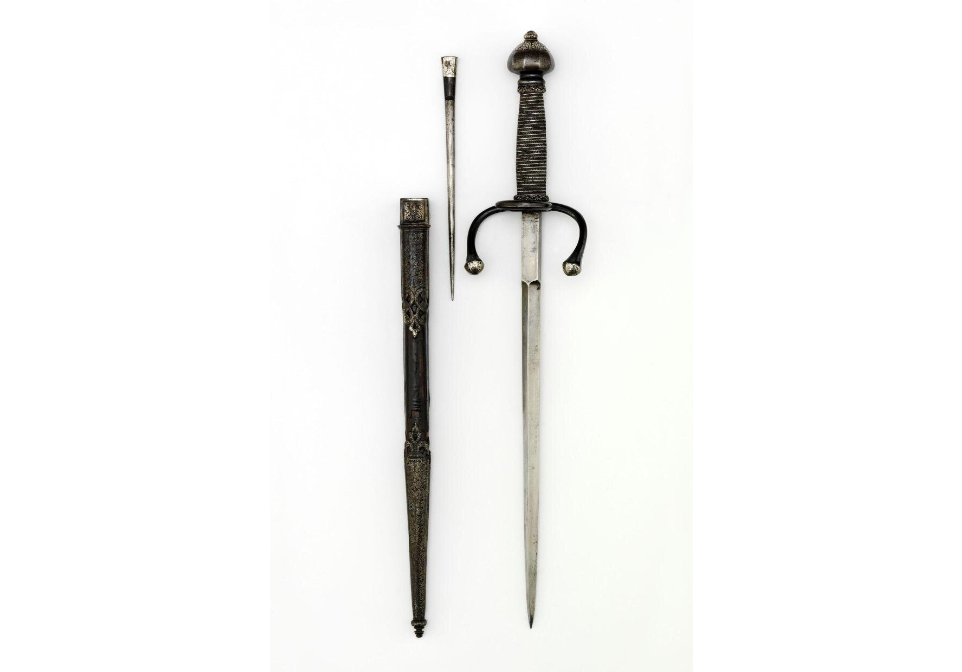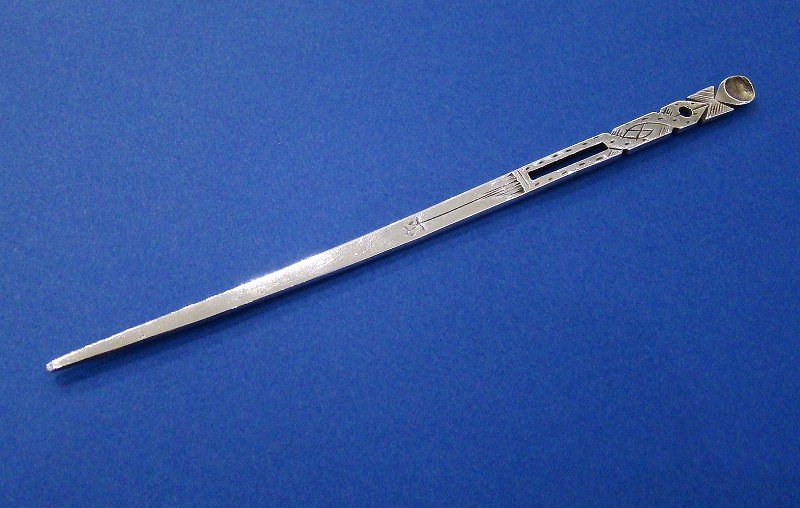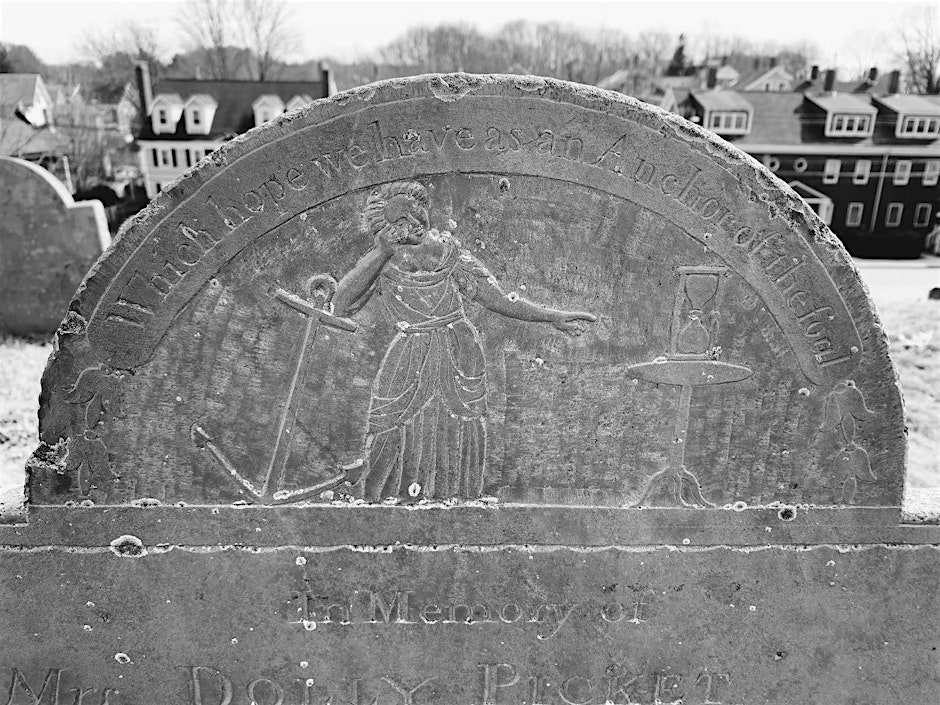Bodkins are a Girl's Best Friend
/a blog by Bethany Groff Dorau
For who would bear the whips and scorns of time…
When he himself might his quietus make
With a bare bodkin? Who would fardels bear,
To grunt and sweat under a weary life…
-Hamlet, Act 3, Scene 1
Okay, I admit that despite being a rather nerdy linguist and a bit of an Anglophile, I have never borne a “fardel” (burden) or wished for my own “quietus” (death) at the hands of a “bare bodkin”. But soft, here’s where I exclaim loudly that I am quite familiar with bodkins. They are a girl’s best friend, at least in Newbury in the 17th century. And the humble bodkin features prominently in one of my favorite court cases (and there are many) from the Essex County Quarterly Court.
Bodkin/dagger combination, c.1580, courtesy of the Victoria and Albert Museum.
The bodkin of Shakespeare’s time was a murderous weapon, a stiletto dagger, an excellent way to hasten one’s “quietus”, if one were so inclined. But in Newbury in the 17th century, a bodkin was a long, flat needle, often with a small spoon at the end. It was a woman’s Swiss Army knife – used to fasten ribbon, tie up corsets, hold one’s hair in place, and perform certain funky acts of personal hygiene. The spoon? Dig out a good quantity of earwax with which to smooth your thread. No joke. As you will see in a moment, bodkins also doubled as toothpicks.
Bodkins, often silver and engraved, sometimes sporting a jewel, appear as valuable items in property inventories in Newbury and have been found in archeological excavations at the 1690 Spencer-Peirce-Little Farm. And in one notable instance of dubious parenting, all the way over yonder in Ipswich, a bodkin was used to keep a baby occupied during church.
This personalized c.1625 bodkin with ear wax spoon is likely much like Goodwife Hunt’s missing implement.
It was May 2, 1669. Elizabeth Hunt’s baby son Joseph, just beginning to stand, was growing restless in their box pew in the Ipswich meeting house. Elizabeth gave the baby her silver bodkin, engraved with her name, likely the only decorative item she wore. The baby, pulling himself up to giggle at the two young women in the pew behind them, dropped the bodkin on the floor. His mother heard it “glance down the wainscoting and jingle on the floor betwixt Sara(h) Day and Sara(h) Roper.” Elizabeth Hunt saw Sarah Roper reach down to the floor, seemingly to retrieve and return the bodkin, but then she just moved her footstool instead. After waiting impatiently through the sermon, an increasingly agitated Elizabeth Hunt asked Sarah Roper for the bodkin. Sarah pointed to the wood plank floor and shrugged. “T’wer in that crack,” she said, a phrase that has become a standard rejoinder in my household for anything that has gone missing. “Where are my keys?”. “T’wer in that crack.” “What happened to the rest of the cheesecake?” “T’wer in that crack.” The legacy of Sarah Roper lives on in the wilds of West Newbury. Elizabeth Hunt looked in the crack, and all over the meetinghouse floor, in fact, though she did not entirely believe Sarah Roper’s version of events. No bodkin materialized.
Sarah Roper’s testimony when, despite the bodkin’s later return, Elizabeth Hunt decided to take her to court for theft, offers a delightful view of a day in church, complete with fashion information and some keen insight into just how closely everyone in town was up in each other’s business.
First, Sarah loudly protested her innocence. “…you are pleased to charge me with stealing your bodkin, which is altogether false, I stole it not. I do affirm that I took it not up, neither did I see it nor feel it, until I came home, and a little before night, sitting in the house, I was turning up the cuff of my sleeve, and feeling something there, pulled down my cuff, and there I found a bodkin, which I presently showed to the folks in the house, who read the name and said it was Goodwife Hunt’s bodkin. I spoke to my brother to carry it…but he refusing to carry it, the next morning I gave it to my sister, who delivered it to her at the burial of Goodwife Whipple. And as the bodkin was suddenly last, so it was suddenly found, and as speedily returned to the owner.”
Case closed, you might think. You would be wrong. Although the bodkin had been returned to the offended Goodwife Hunt, feelings ran high in the courtroom and “there was such a “clamor and tumultuous noise, and such exclaiming and deriding,” that the judges could not hear the witnesses. They called for better decorum.
A stream of witnesses, 25 in all, provided testimony in this case.
People had heard the bodkin fall. Two teenage girls testified about exactly what Sarah Roper was wearing – “a dark colored waistcoat with a shallow cuff not lined, which was not close to the sleeve but hung down.” They also testified that "the next time Sarah Roper went to meeting, she had the cuff turned up a good deal higher." To add insult to injury, Goodwife Hunt herself testified that she believed she saw Sarah Roper picking her teeth with the missing bodkin. Another witness said, “it was impossible for her to see so far as to see Sarah picking her teeth of the bodkin.” The parade of witnesses, young and old, male and female, who testified in this case was astonishing.
Ultimately, the case was dropped, as the item had been returned, and the good people of Ipswich, like the good people of Newbury, went back to fighting, and building, and farming, and making babies.
Should you wish to reenact BodkinGate for yourselves, this English iron bodkin with ear wax spoon can be yours today on the website Etsy for only $1,135.00.
In my house this episode is known as BodkinGate, and it began when my husband James had a slow day at work and decided to peruse some Essex County Quarterly Court records. He came home, sat me down, and told me the story, gob-smacked that the entire town of Ipswich seemed to turn out to testify about this item. I have loved this story ever since, this one item revealing so much about how early New England towns behaved (and misbehaved), and how connected they are with each other.
Two centuries later, in 1881, a Newburyport inventor, William R. Whitmore, filed for a patent for a tool that combined tweezers and a bodkin. This was the discovery that spurred this article, but it turns out that this multi-purpose tool was intended “for use by printers in correcting forms of type.”







